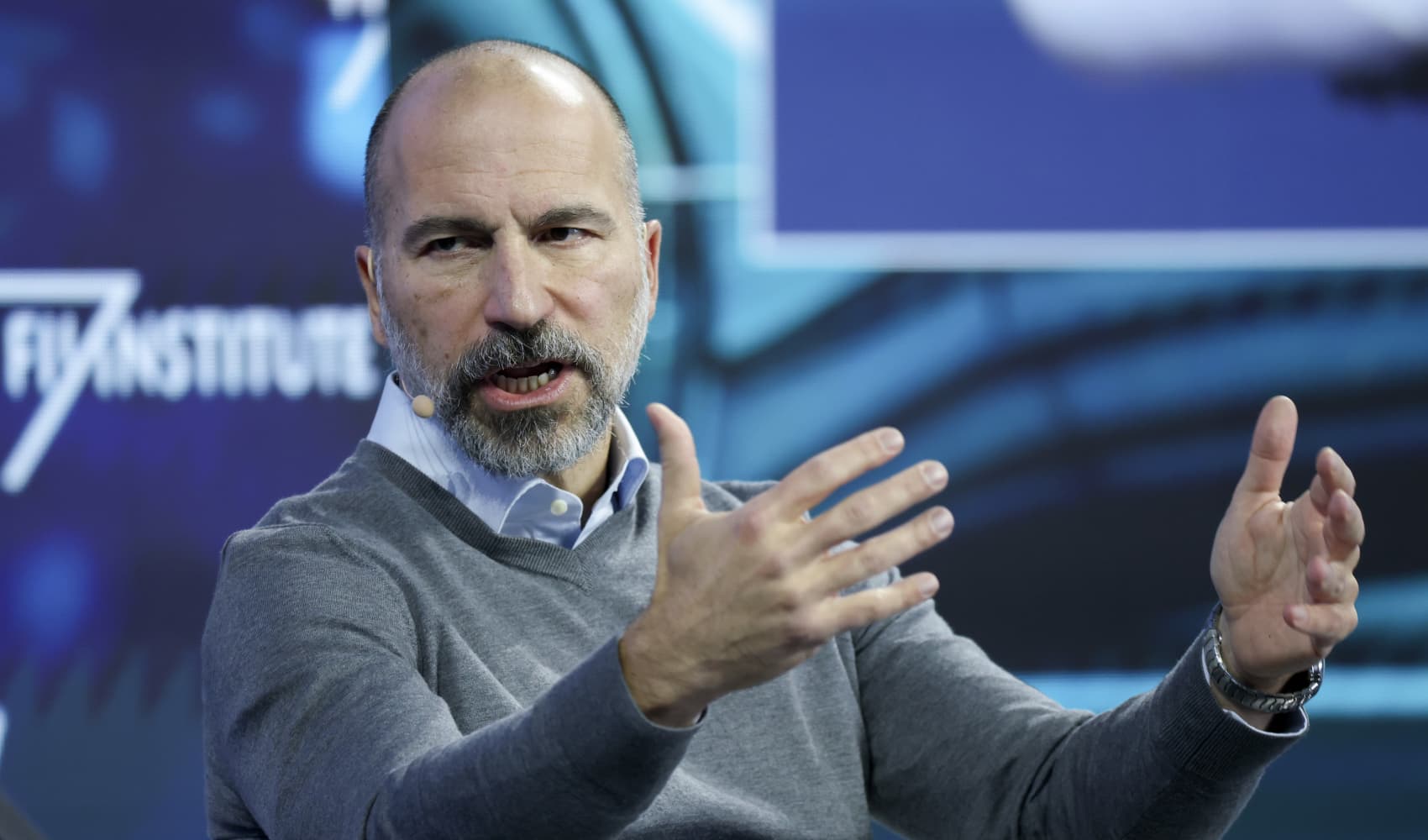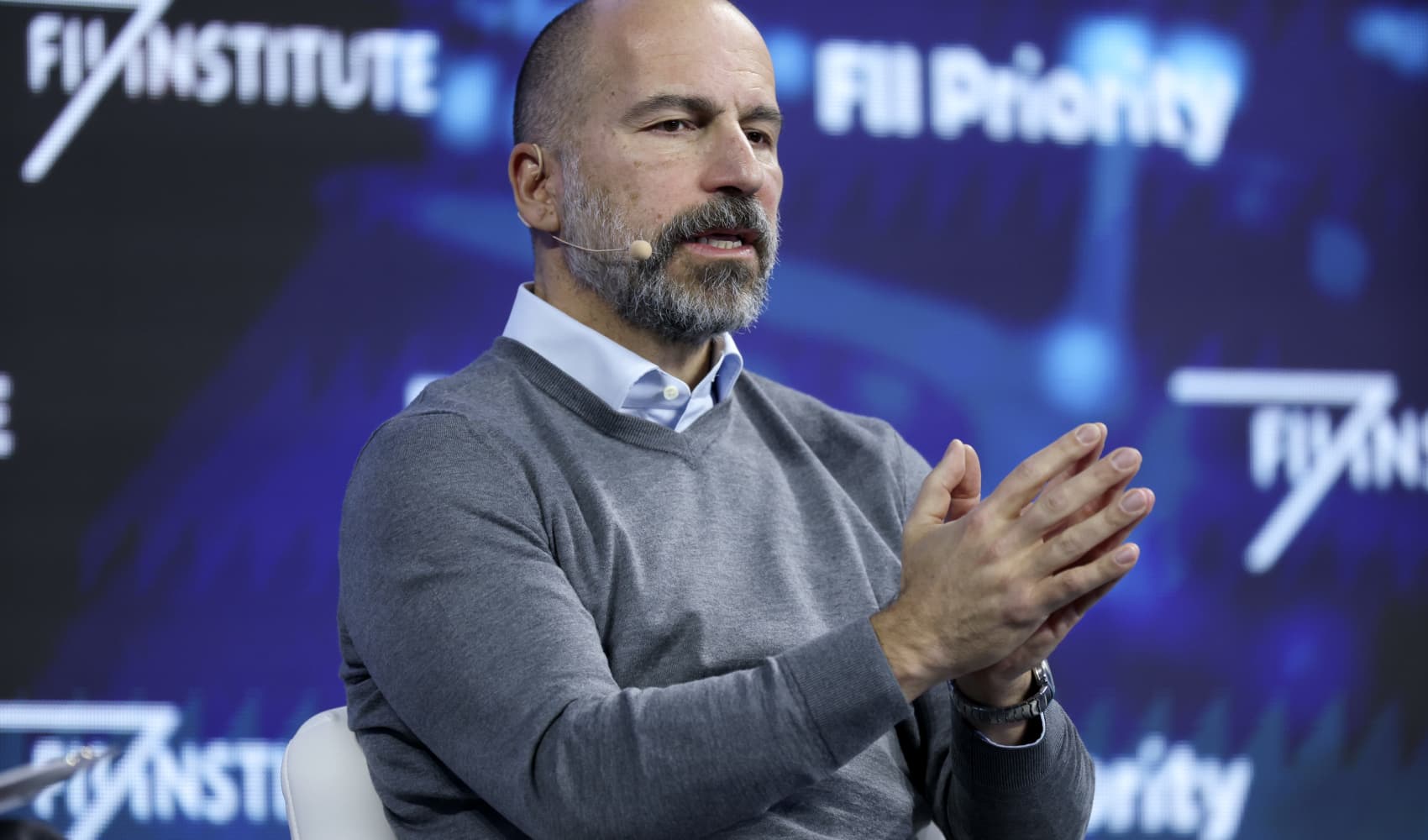Uber CEO's Secret: Curiosity Powers Career Success
Uber CEO's Secret Weapon: How Curiosity Propelled Him to Success
Introduction: The Unexpected Key to a Thriving Career
What's the one thing that separates a successful career from a mediocre one? Is it relentless hard work, unwavering dedication, or sheer brilliance? According to Uber CEO Dara Khosrowshahi, it's something surprisingly simple: curiosity. He believes this single trait has been instrumental in his "unbelievably lucky" career, opening doors he never even knew existed.
In today's rapidly changing world, clinging tightly to a rigid career path might actually be detrimental. Khosrowshahi emphasizes the importance of embracing the unknown and being open to unexpected opportunities, especially early in your career. So, ditch the preconceived notions and get ready to unlock your potential with the power of curiosity!
The Khosrowshahi Formula: Curiosity as a Career Catalyst
Khosrowshahi didn't meticulously plan every step of his journey to the top. Instead, he cultivated a deep sense of curiosity, allowing it to guide him through uncharted territories. As he stated during a fireside chat with Brown University president Christina H. Paxson, "I have gotten unbelievably lucky in my career, but I’ve gotten lucky because I’m very, very open to anything."
Embrace the Unexpected
Think of your career as a winding river, not a straight highway. There will be unexpected bends, detours, and even rapids. Being curious allows you to navigate these challenges with agility and grace. It encourages you to explore unfamiliar paths and discover hidden gems along the way.
Say "Yes" More Often
How many times have you turned down an opportunity because it didn't perfectly align with your "plan"? Khosrowshahi suggests that saying "yes" more often can be a game-changer. You never know where a seemingly random opportunity might lead you. It could be the stepping stone to your dream job or, even better, a job you never even dreamed of!
Why Curiosity Matters: More Than Just a Personality Trait
Curiosity isn't just a nice-to-have personality trait; it's a powerful tool that can significantly impact your career trajectory. It fuels innovation, fosters creativity, and enhances your problem-solving abilities. In a world that's constantly evolving, curiosity is your secret weapon for staying ahead of the curve.
Learning Never Stops
A curious mind is a learning mind. It's constantly seeking new information, challenging assumptions, and expanding its knowledge base. This continuous learning process is essential for adapting to new technologies, industries, and market trends.
Connecting the Dots
Curiosity helps you connect seemingly disparate ideas and concepts, leading to innovative solutions and breakthroughs. By exploring diverse fields and perspectives, you can develop a more holistic understanding of the world and your place within it.
The Ripple Effect: How Curiosity Impacts Others
Curiosity isn't just beneficial for you; it can also have a positive impact on your colleagues, your team, and your organization. A curious leader encourages innovation, fosters collaboration, and creates a culture of continuous improvement.
Inspiring Innovation
When you ask "why?" and "what if?" you challenge the status quo and inspire others to think outside the box. This can lead to new products, services, and processes that drive growth and success.
Building Stronger Teams
A curious team member is more likely to listen to different perspectives, ask insightful questions, and contribute valuable ideas. This fosters a more collaborative and inclusive environment where everyone feels valued and empowered.
Beyond the Resume: Cultivating Curiosity in Your Daily Life
Curiosity isn't something you can simply switch on and off. It's a mindset that needs to be cultivated and nurtured. Here are a few practical tips for fostering curiosity in your daily life:
Read Widely
Expand your reading horizons beyond your immediate field of interest. Explore different genres, authors, and perspectives. The more you read, the more you'll learn and the more curious you'll become.
Ask Questions
Don't be afraid to ask "dumb" questions. Often, the most insightful questions are the ones that seem the most obvious. The key is to be genuinely curious and to seek to understand.
Travel and Explore
Traveling to new places and experiencing different cultures can broaden your perspective and spark your curiosity. Even if you can't travel physically, you can explore new cultures through books, movies, and documentaries.
Turning Curiosity into Tangible Results: Real-World Examples
Let's look at some concrete examples of how curiosity has led to remarkable achievements:
The Post-it Note
Spencer Silver, a 3M scientist, was trying to develop a super-strong adhesive, but instead, he accidentally created a "low-tack" adhesive that could be easily removed. While seemingly useless at first, his curiosity led him to wonder if this new adhesive could be used for something else. Art Fry, another 3M employee, was frustrated with bookmarks constantly falling out of his hymnal at church. He remembered Silver's adhesive and the Post-it Note was born!
Penicillin
Alexander Fleming's messy lab and observant nature were crucial in the discovery of penicillin. He noticed a mold growing on a petri dish that was inhibiting the growth of bacteria. His curiosity about this phenomenon led to the development of one of the most important antibiotics in history.
The Age of Uncertainty: Curiosity as a Competitive Advantage
In today's rapidly evolving landscape, the ability to adapt and learn quickly is more critical than ever. Curiosity is the key to unlocking this adaptability and gaining a competitive advantage. Those who are curious will be the ones who thrive in the face of uncertainty.
Future-Proofing Your Career
By staying curious and continuously learning, you're future-proofing your career against disruption. You're constantly expanding your skillset and knowledge base, making yourself more valuable and adaptable.
Embracing Change
Curiosity helps you embrace change with enthusiasm rather than fear. You see change as an opportunity for growth and learning, rather than a threat to your stability.
Overcoming Obstacles: Dealing with Fear and Doubt
It's natural to feel fear and doubt when venturing outside your comfort zone. But don't let these emotions hold you back. Acknowledge them, challenge them, and move forward with curiosity as your guide.
Reframing Failure
See failure as a learning opportunity rather than a setback. Every mistake is a chance to learn, grow, and refine your approach. A curious mind embraces failure as a necessary part of the learning process.
Building Confidence
The more you explore and learn, the more confident you'll become. Each new experience will expand your comfort zone and empower you to take on bigger challenges.
The Importance of Mentorship: Seeking Guidance and Inspiration
Finding a mentor who embodies curiosity and a love of learning can be invaluable. They can provide guidance, support, and inspiration as you navigate your career journey.
Learning from Others' Experiences
Mentors can share their experiences, insights, and lessons learned, helping you avoid common pitfalls and accelerate your growth.
Expanding Your Network
Mentors can also introduce you to new people and opportunities, expanding your network and opening doors to new possibilities.
Building a Curiosity-Driven Culture: Fostering Innovation in the Workplace
If you're a leader, it's essential to create a workplace culture that values curiosity and encourages experimentation. This will foster innovation, improve employee engagement, and drive business success.
Encouraging Experimentation
Give your employees the freedom to experiment with new ideas and approaches. Create a safe space where they feel comfortable taking risks and learning from their mistakes.
Providing Resources for Learning
Invest in training and development programs that promote curiosity and continuous learning. Provide access to books, articles, and online courses that expand employees' knowledge base.
Beyond the Boardroom: Curiosity as a Life Skill
Curiosity isn't just a valuable career skill; it's a life skill that can enrich your personal life as well. It can lead to deeper connections, more meaningful experiences, and a greater sense of fulfillment.
Developing Empathy
Curiosity helps you understand different perspectives and develop empathy for others. It encourages you to see the world through their eyes and to appreciate their unique experiences.
Finding Joy in the Everyday
Curiosity can help you find joy and wonder in the everyday moments of life. It encourages you to appreciate the beauty and complexity of the world around you.
The Digital Age: Harnessing Technology to Fuel Curiosity
In the digital age, there's an overwhelming amount of information at our fingertips. Learning how to effectively use technology to fuel our curiosity is essential. Here are some quick tips:
- Use search engines strategically: Don't just Google answers; ask questions that lead to deeper exploration.
- Explore online courses: Platforms like Coursera and edX offer courses on virtually every topic imaginable.
- Engage with online communities: Connect with like-minded individuals who share your interests and passions.
Conclusion: Embrace the Unknown and Unlock Your Potential
Dara Khosrowshahi's story is a testament to the power of curiosity. It's not just about being lucky; it's about being open to new experiences, embracing the unknown, and continuously learning. By cultivating curiosity in your career and your life, you can unlock your full potential and achieve remarkable things. So, go out there, ask questions, explore new horizons, and see where your curiosity takes you!
Frequently Asked Questions (FAQs)
- 1. How can I become more curious if it doesn't come naturally to me?
- Start small! Pick one topic you've always been mildly interested in and dedicate a little time each week to exploring it. Read articles, watch documentaries, or even join a related online community. The key is to make it fun and engaging.
- 2. I'm afraid of looking stupid when I ask questions. What should I do?
- Remember that everyone starts somewhere. Most people appreciate genuine curiosity and are happy to share their knowledge. Frame your questions as a way to learn and understand, not as a challenge to their expertise.
- 3. How do I balance curiosity with the need to focus on my current job responsibilities?
- Schedule dedicated time for exploration and learning. Even 30 minutes a day can make a big difference. Also, look for opportunities to incorporate curiosity into your existing role. Can you find a new way to streamline a process or learn a new skill that could benefit your team?
- 4. What if I explore a new area and decide it's not for me? Is that a waste of time?
- Absolutely not! Even if you discover something isn't a good fit, you've still learned valuable information about yourself and your interests. This knowledge can help you make better decisions in the future.
- 5. How can I encourage curiosity in my children or team members?
- Create a supportive and encouraging environment where questions are valued and exploration is celebrated. Lead by example by demonstrating your own curiosity and enthusiasm for learning. Offer opportunities for them to explore their interests and provide resources to support their growth.




